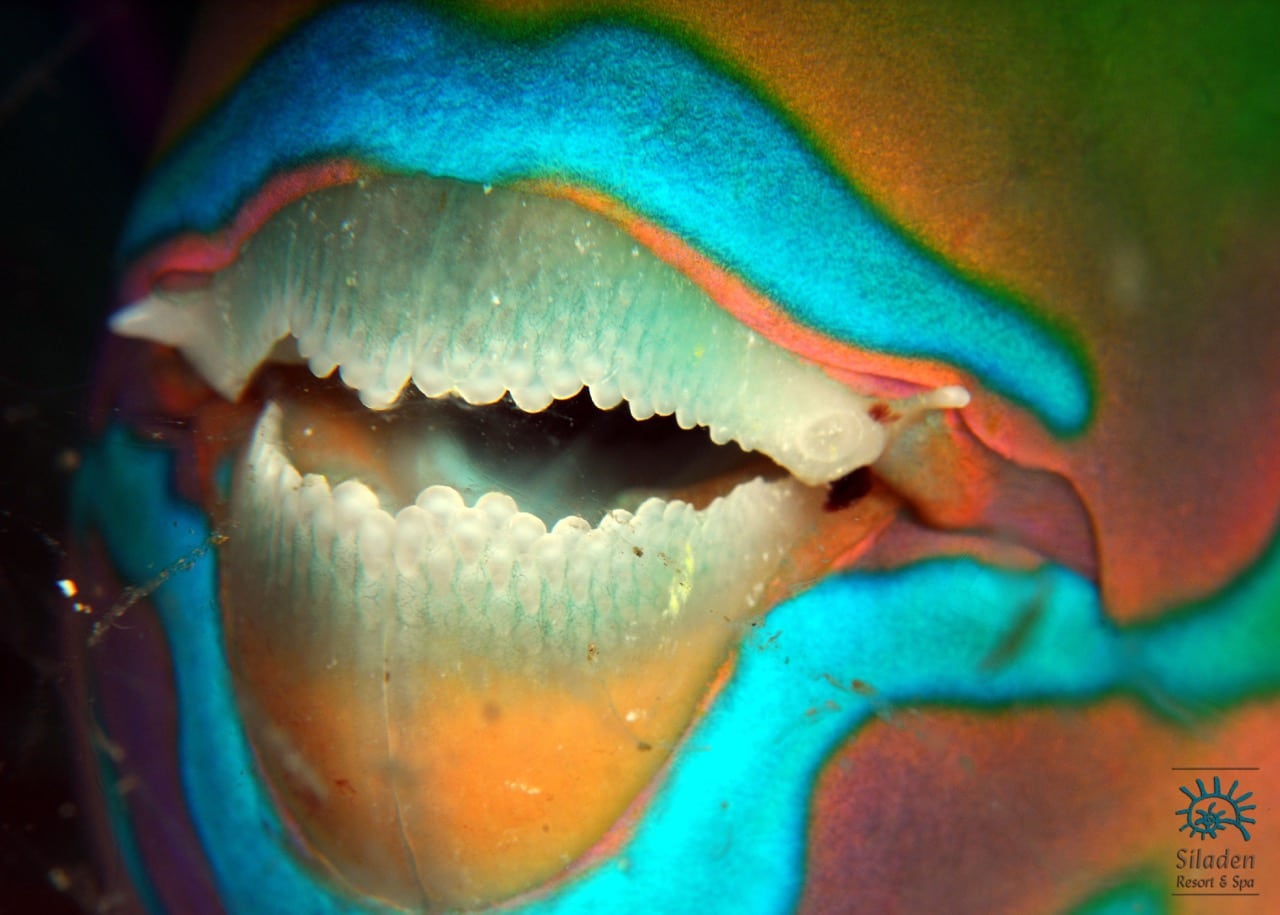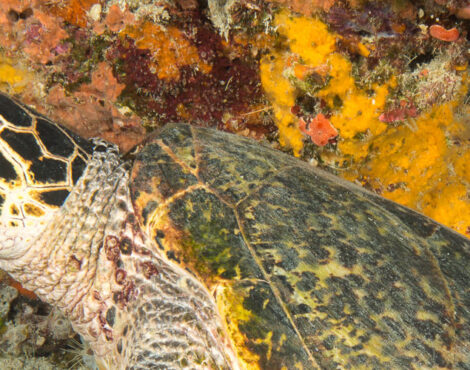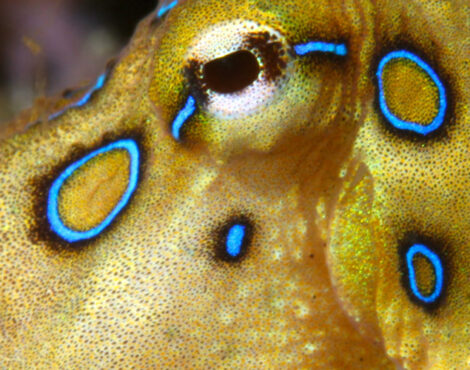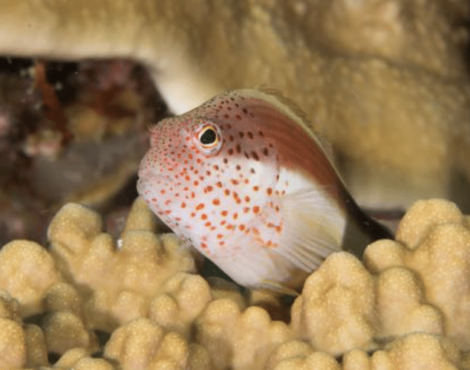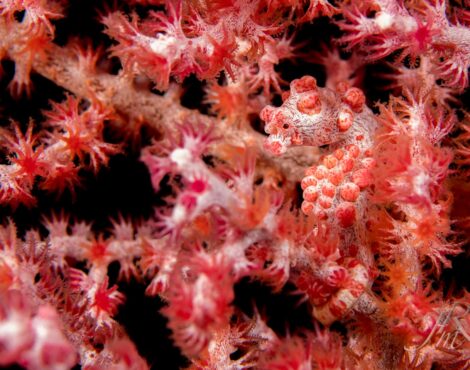“What are those rainbow coloured fish? I could never get bored of them!” is a sentence you will often hear coming from the mouths of newly certified divers or those who have donned a mask, snorkel and fins for the first time.
Parrotfish: The Common Beauties of the Reef
They are of course referring to the family Scaridae, or more commonly referred to as Parrotfish. These exquisitely coloured fish are found in tropical and subtropical seas throughout the world, however as with most reef dwellers, the largest species diversity is foundwithin the coral triangle. Such a common sight, they are often ignored or forgotten along with other reef regulars like butterfly fish or angel fish, in favour of rarer, more exotic looking species such as ghost pipefish, lion fish or nudibranchs. And indeed, after a few extra dives, or a little more time snorkelling, those who claimed to never get bored of parrot fish, are now not even giving them a passing glance, as they too search for more exotic creatures.
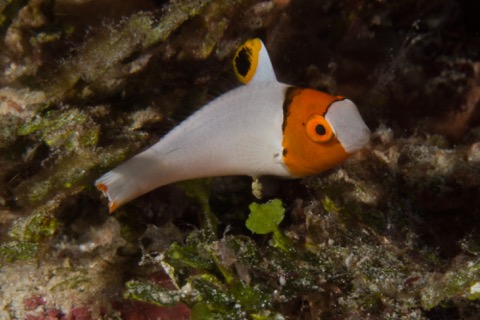
The Fascinating Life Cycle of Parrotfish: From Juveniles to Terminal Phase
The family Scaridae comprises of 95 species over 10 genera. The maximum size varies from species to species, but the majority of species have a maximum of 30-50 cm. Some species can grow very large, such as the Green Humpead Parrotfish, which fully grown can reach over 120 cm.
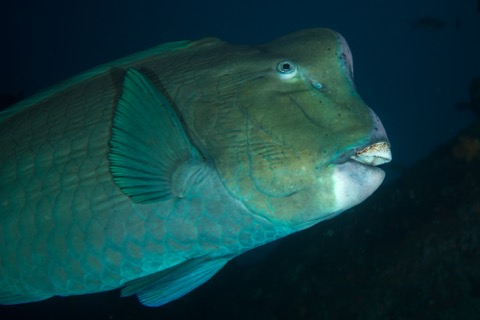
Guardians of the Reef: The Vital Role of Parrotfish in Reef Health
Parrotfish are diurnal creatures, which means they are active during the day. At night they will find a small crack or crevice in the reef for shelter. Prior to sleeping, they will excrete a thick mucus from their mouths, effectively blowing a bubble around themselves, forming a protective cocoon. This will make them harder to spot in the reef, and hide their scent from potential predators. Their skin is also covered in a different mucus, that can help protect them from parasites and UV light; possibly even helping to repair tissue damage.
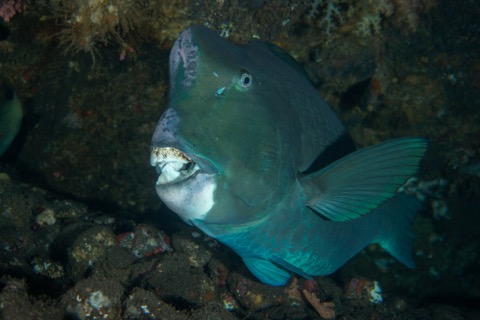
Algae Eaters and Coral Creators: The Importance of Parrotfish in Ecosystem Balance
Like many other marine creatures, parrotfish have a complicated and interesting development and life cycle accompanied by polychromatism- A series of colour changes. Most species (but not all) are sequential hermaphrodites, beginning life as what we call the “Initial Phase” (female) and then developing into the “Terminal Phase” (male). Again, for most but not all species of parrotfish, the juveniles have a different colour pattern to the adults, often mimicking other species. This is probably the most noticeable with the Bicolour Parrotfish. In their terminal phase they have a fantastic rainbow colouration, however as a juvenile they are white and orange.
Although they may be a common sight, Parrotfish are a fascinating family, and play an extremely important role in maintaining the heath of the reef. In fact, they are probably the most important reef dwelling fish. But why?
The Curious Diet of Parrotfish: Algae Scraping and Coral Polyp Consumption
Depending on the species, parrotfish are either herbivores, eating only algae, or omnivores, such as the largest species; the Bump Head Parrotfish, who also add coral polyps to their diets. They spend a good chunk of the day scraping algae off rocks, coral and rubble with their sharp beaks. This algae removal is extremely important for the reef. Algae grows very quickly, and space is limited on the reefs. If the parrotfish were removed, the algae would spread rapidly, preventing slow growing corals from ever getting a chance to settle and grow.
While scraping away, the parrotfish inevitably end up removing some of the rock or coral surface, which they will also ingest. Once digesting the edible parts of the rock or coral, they will excrete lovely white sand that makes up so many of the beautiful beaches you see throughout the tropics. A single humphead parrotfish can produce close to 100 kg of this fine coral sand in a year, and all the smaller species will contribute too. All of this rock and coral scraping does damage and wear down the beak like teeth of the parrotfish. Luckily their teeth never stop growing, replacing the material that gets worn away by their daily eating.
Like many other marine creatures, parrotfish have a complicated and interesting development and life cycle accompanied by polychromatism- A series of colour changes. Most species (but not all) are sequential hermaphrodites, beginning life as what we call the “Initial Phase” (female) and then developing into the “Terminal Phase” (male). Again, for most but not all species of parrotfish, the juveniles have a different colour pattern to the adults, often mimicking other species. This is probably the most noticeable with the Bicolour Parrotfish. In their terminal phase they have a fantastic rainbow colouration, however as a juvenile they are white and orange.
Parrotfish and Reef Restoration: Protecting these Vital Reef Dwellers
There are many places in the world where reef fish stocks have been depleted by overfishing. This has led to what were once beautiful and diverse coral reefs being transformed into algae cemented graveyards. Many other species also contribute to keeping the reefs clean of algae, but not nearly to the same extent as parrotfish. Some countries that would regularly consume parrotfish are now protecting them in a desperate bid to bring the reefs back to their former glory. Luckily this is not an issue for us here in Bunaken Marine Park, or other parts of Indonesia, where parrotfish species diversity and number of individuals are high. On any dive you may see several different species, such as the bicolour, bullet, or the dusky parrotfish. Each with their own beautiful and flamboyant colouration.

